After much teasing (just like the R5 before it), Canon has finally announced the full specifications and price of its new flagship full frame mirrorless camera, the Eos R3. It is the most advanced Canon camera to date and features a new sensor, updated autofocus and much more.
The R5 sits below the R3. It is less expensive but has a few unique features of its own. Let’s see how they compare.
What the R3 and R5 have in common:
- 5-axis in-body image stabilisation with a maximum rating of 8 stops of compensation (with certain lenses)
- viewfinder with 5.76M dots, 0.76x magnification, 120Hz refresh rate and 23mm eyepoint
- various wifi and network options to transfer images
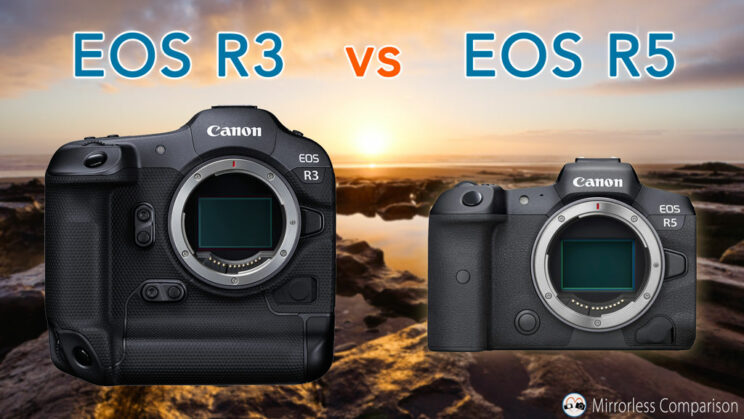
Ethics statement: the following is based on our personal experience with the R5 and official specs of the R3. We were not asked to write anything about these products, nor were we provided with any sort of compensation. Within the article, there are affiliate links. If you buy something after clicking the link, we will receive a small commission. To know more about our ethics, you can visit our full disclosure page. Thank you!
1. Sensor
The R3 has a brand new sensor made by Canon: it has 24.1MP and a BSI / stacked structure, the latter being a first for the company. Similar to the Sony A9 and A1 series, this type of sensor allows a faster processing and readout speed, pushing the performance of the camera to new levels, especially when it comes to the electronic shutter, drive speed and live view (more on this in the next chapters).

The R5 has the advantage of more resolution – 45MP to be precise – but the sensor design is not as advanced as the R3’s. Both cameras feature a low-pass filter.
Concerning the ISO performance, the R3 has a wider range:
- R3: 100-102,400 ISO (expandable to 50 and 204,800)
- R5: 100-51,200 ISO (expandable to 50 and 102,400)
2. Blackout-free live view
The Sony A9 was the first mirrorless camera capable of offering a true blackout-free experience when taking pictures with the electronic shutter. The live view on the EVF (or LCD screen) remains active when you start taking pictures, instead of alternating live view with blackouts, or disabling live view altogether and showing the pictures being recorded instead. This gives you a lag-free experience as well as an uninterrupted view of the scene in real-time, and you really notice the difference when following fast and unpredictable subjects such as birds for example.
Fujifilm was the second company to incorporate such a capability, starting with the X-T3, and now the R3 joins the club thanks to its stacked sensor and fast processing speed. Live view is maintained without blackouts with a refresh rate of 120Hz, which means the view is very smooth and fluid as well.
3. Shutter and continuous shooting speed
The super quick processing capabilities of the R3 allow the camera to set a new standard when it comes to the fastest shutter speed possible, which is 1/64,000 with the electronic shutter. The R5 can go as fast as 1/8000s, which is also the fastest speed available when using the mechanical shutter on both cameras.
The other increase in speed concerns the maximum drive burst of 30fps. However the R5 defends itself well with 20fps, considering the higher resolution of the sensor.
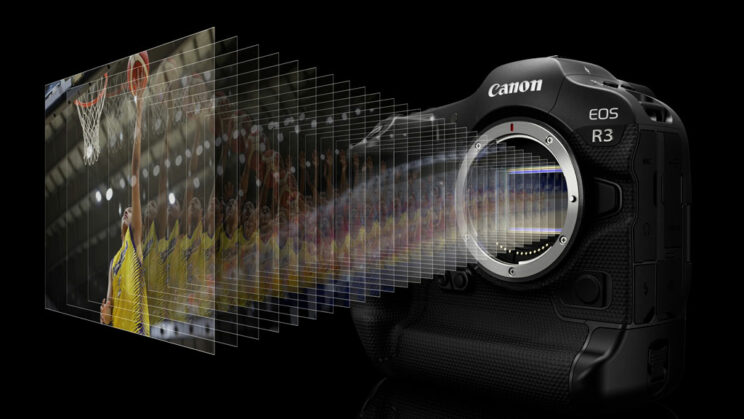
Another thing about the R3 is that you can choose a slower speed with the electronic shutter (15fps when High-Speed is selected, or 3fps when Low-Speed is selected). With the R5, it’s always 20fps.
Another nice improvement is the maximum flash sync speed when using the electronic shutter, which is 1/180s. With the R5, you must set the mechanical or electronic-first curtain shutter.
With the mechanical shutter, both cameras go up to 12fps.
Concerning the buffer memory, here are the maximum frames both cameras can capture at the fastest continuous shooting speed.
| Speed | R3 | R5 |
|---|---|---|
| 30fps | 540 JPG L 150 RAW | – |
| 20fps | – | 170 JPG L 83 RAW |
| 12fps | 1000 or higher (RAW or JPG) | 350 JPG L 180 RAW |
4. Autofocus
The R3 and R5 use Canon’s advanced Dual Pixel CMOS AF II system. They work with a maximum of 1,053 areas when the tracking method is selected and they feature deep learning technology that allows the two models to track human or animal bodies, heads and eyes.
The R3 features an updated system in comparison to the R5, with the following improvements:
- it can recognise vehicles and helmets of racing drivers (cars and motorbikes)
- it has a faster locking speed of 0.03s
- AF and AE work at 60 calculations per second (like the Sony A9 series)
- the deep learning database used for face and eye tracking is bigger, and a person can be recognised if he or she wears a helmet or a mask
- subject detection works with Zone AF and Large Zone AF. In fact, all the AF methods can be used as a starting point to initiate tracking.

Last but not least, the R3 has more sensitivity in low light with a rating of -7.5Ev, whereas the R5 works down to -6Ev (both measured at f/1.2).
5. Viewfinder and Eye Control AF
Another feature related to the autofocus that deserves recognition is Eye Control AF, which allows you to move the AF point in the viewfinder by simply moving your pupil.
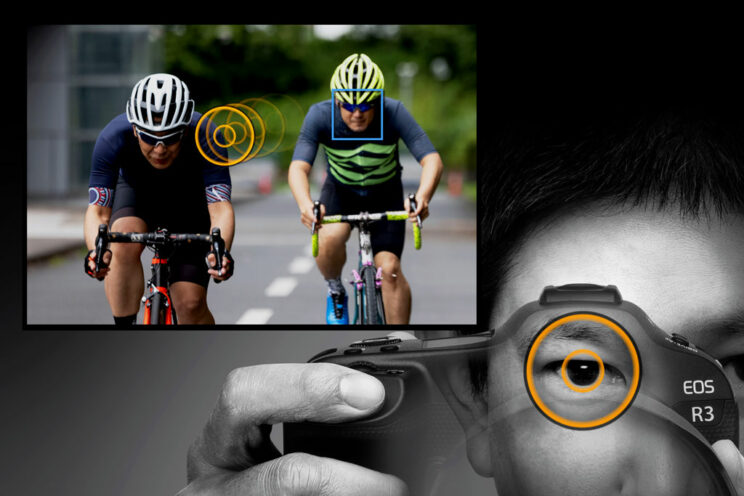
This is a function that Canon first introduced with the EOS 3 film camera of the nineties, but this is the first time that it has been integrated onto a digital camera. It is a more accurate version that uses the company’s extensive knowledge of the medical division. It works with 8 infrared LED around the viewfinder to track the position of your eye. You can assign the setting to a button to quickly enable or disable it.
I was really curious to find out more about this function, so I watched a few videos and the one from Gordon Laing explains really well how it works (starting at 12:59).
Another new feature in comparison to the R5 is the addition of the Optical Viewfinder (OVF) simulation mode, which uses HDR technology to give a brighter view of the scene using the full tonal range of the EVF panel.
6. Video
Both cameras feature advanced video capabilities that very few other products can match.
Concerning the maximum resolution, the R3 can record 6K up to 60fps whereas the R5 can do 8K at 30fps. These formats are available without a sensor crop, and can be recorded internally in 12-bit RAW on the R3, or RAW and 10-bit 4:2:2 on the R5 (H.265 codec with C-Log or HDR PQ).
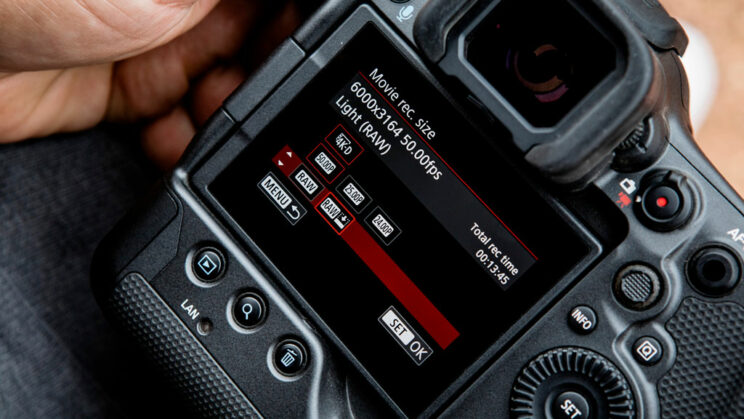
In 4K, they can both record up to 120fps with IPB or ALL-intra compressions. The sensor is not cropped but, in the case of the R5, it does line-skipping whereas the R3 over-samples from 6K. Below is a recap of the maximum bitrates available for each camera.
| Format | R3 | R5 |
|---|---|---|
| 8K 30p (RAW) | – | 2600 Mbps |
| 8K 30p (ALL-I) | – | 1300 Mbps |
| 6K 60p (RAW) | 2600 Mbps | – |
| 6K 30p (RAW) | 2000 Mbps | – |
| 4K 120p (ALL-I) | 1880 Mbps | 1880 Mbps |
| 4K 60p (ALL-I) | 1000 Mbps | 940 Mbps |
| 4K 30p (ALL-I) | 470 Mbps | 470 Mbps |
| FHD 120p (ALL-I) | 470 Mbps | 360 Mbps |
| FHD 60p (ALL-I) | 230 Mbps | 180 Mbps |
Another important difference is the recording limit. The R5 can do a maximum of 30 minutes per clip on paper, but various real-world tests have shown that the camera easily stops before that because of overheating issues.
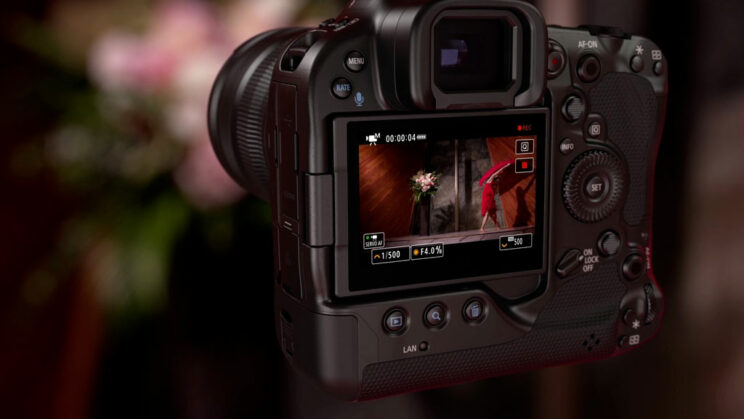
Fortunately, the R3 and its larger body don’t seem to be affected by the same problem. Not only does the camera not have the cap of 30 minutes, but the first reviews, including that of Gordon Laing, suggests you can shoot without interruption for more than two hours in 4K 25p with the internal battery, or 6 hours with external power. The camera also has an Auto Power Off Temperature setting to extend the duration, in case the camera starts to overheat.
7. Design
The most noticeable difference on the outside is the larger body of the R3, which follows the same design of Canon flagship DSLRs and features a built-in vertical grip. As a result, the R3 is also heavier, although the difference is neutralised if you attach the optional R5 battery grip.
- R3: 150 x 142.6 x 87.2mm, 1015g
- R5: 138 x 97.5 x 88.0mm, 738g
- R5 + battery grip: 138 x 142 x 88mm, 1089g
Both cameras are built with a magnesium alloy frame and are weather sealed. Canon says that the R5 has the same build quality standard as the 5D IV DSLR, whereas the R3 is at the same level as the 1D X series.
On the front, the R3 has two custom buttons, that are also replicated for vertical shooting. The R5 has one button.
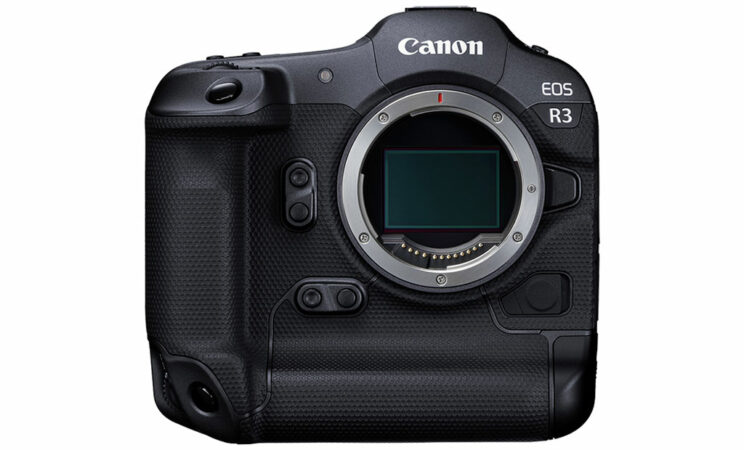
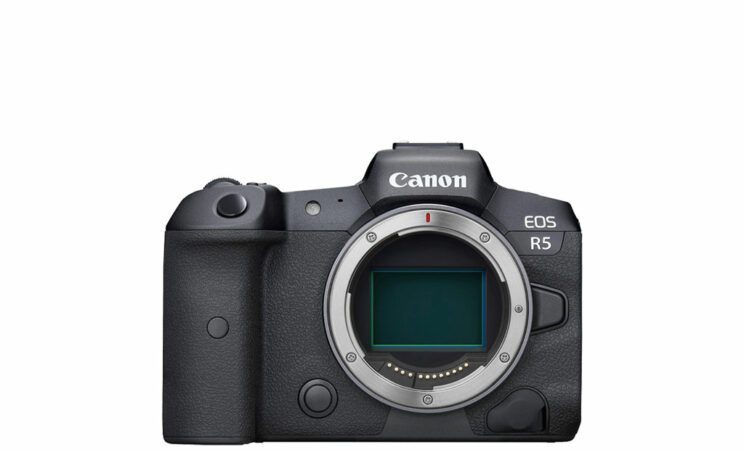
On top, the R3 has two extra buttons on the left and the On/Off switch has been moved to the rear and can also lock certain buttons while the camera is in use. Both have a top LCD screen that display basic information, and the M button to switch between different shooting modes.
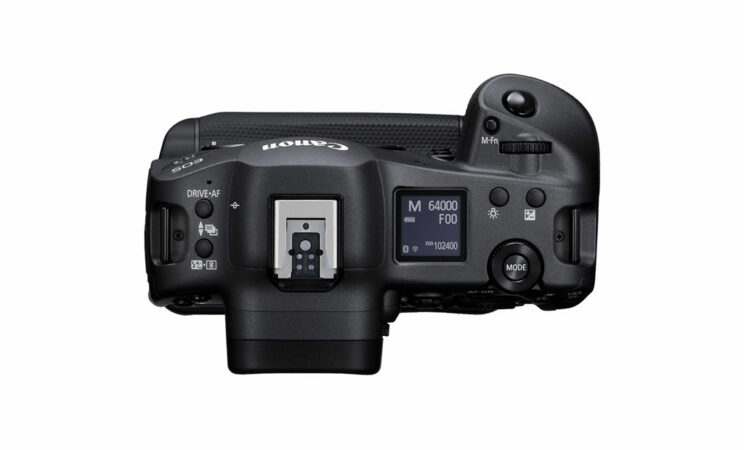

On the rear, they both feature a 3.2-in multi-angle LCD screen but the R3 has more resolution (4.15M vs 2.1M dots). They both have an autofocus joystick but the R3 has extra controls such as a photo/video mode switch and the smart controller inherited from the 1D X III (which works like a miniaturised touchpad to move the AF point). Most of these controls are replicated for vertical shooting on the R3.
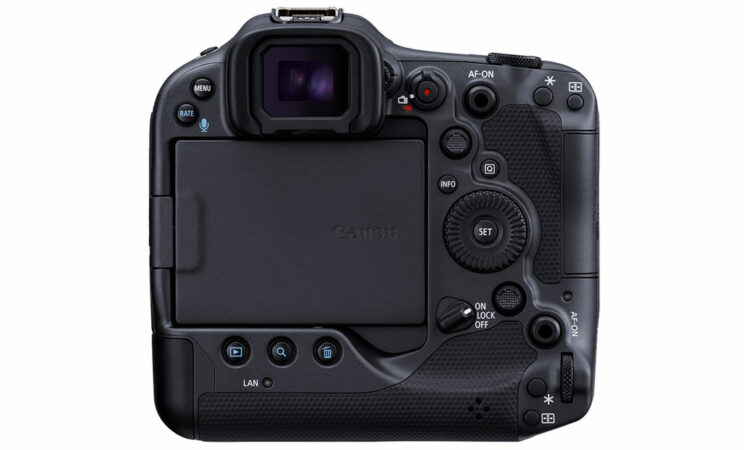
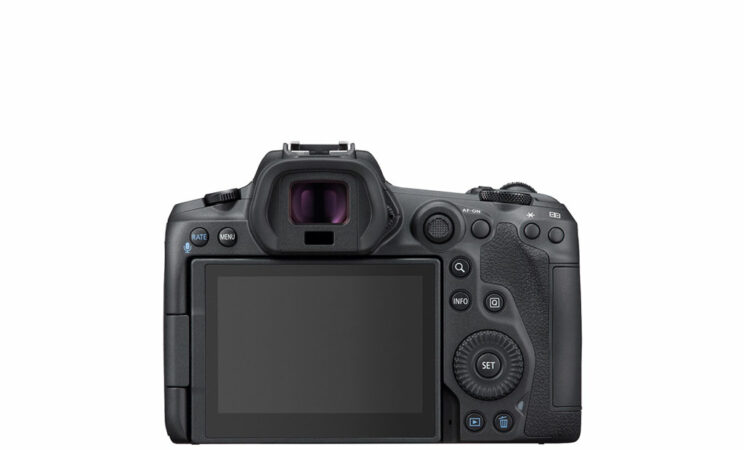
Both cameras feature dual card slots: one takes the CFexpress card and the other SD UHS-II cards.
Finally, concerning the physical connections, they both feature 3.5mm microphone and headphone sockets, a USB Type C terminal and a Micro HDMI port. The R3 also has an Ethernet RJ-45 port. The R3 can also use the USB port to transfer images to a smartphone.
8. Multi-Function Shoe
A first on a Canon camera, the Multi-Function Shoe on the R3, just like the one found on Sony cameras, allows you to mount a good variety of compatible accessories and allows for better communication with the camera, including digital audio recording with compatible microphones (no analog cable required). It can also connect to the network of a mobile phone with the Smartphone Link Adapter AD-P1.
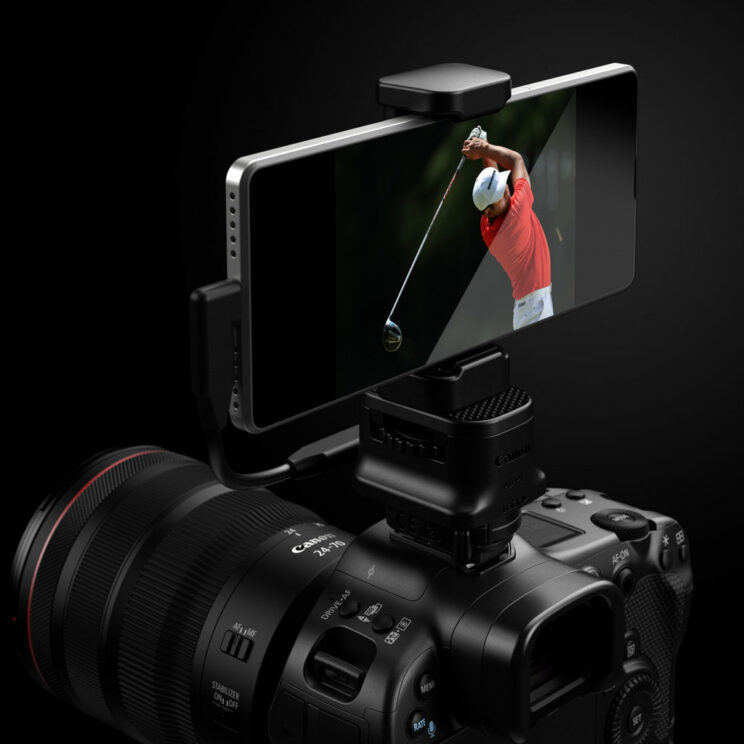
The R5 has a standard hot-shoe, but you can buy the optional Multi-function Shoe Adapter AD-E1 to have some of the capabilities of the R3.
9. Battery life
The R3 uses a bigger battery pack, the LP-E19 with 2750 mA. The camera has a rating of 620 frames with the LCD, or 860 frames when using the EVF.
The R5 battery life is basically half that of the R3: 320 with the EVF and 490 images with the LCD.
These ratings imply the use of the Power saving mode. With the Smooth mode, they go down by approximately 30% (EVF) or 12% (LCD).
10. Price
Here comes another big difference between the two cameras.
The R3 is more expensive and starts at $6000, £5880 or €6000.
The R5 can be found for $3900, $4300 or €4600.
Prices are for the body only and as of September 2021.
Conclusion
There are a lot of things that I like about the R3 and it seems that the company that was long criticised for lacking innovation has really caught up with its main competitors, Sony above all.
The R3 looks like a stunning camera for sports and wildlife photographers, as well as professional video-makers. On paper, I can’t really see any big flaws with the new flagship.
The R5 has a lot to offer as well when it comes to performance, and has the advantage of a sensor with a higher resolution which can be helpful for key genres like wildlife. It costs less, which is another advantage, and its large array of features will probably satisfy the majority of users.
It’s a shame that the R5’s good name has been partially ruined with the overheating issue that affects 8K and 4K video recording. In this respect, the R3 looks like a more reliable product.
Check price of the Canon Eos R3 on
B&H Photo
Check the price of the Canon EOS R5 on:
Amazon | Amazon UK | B&H Photo | eBay
